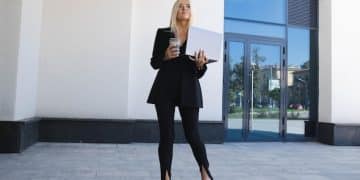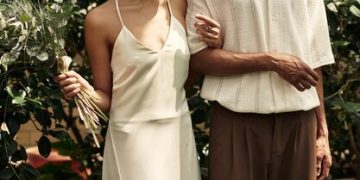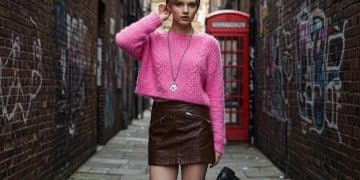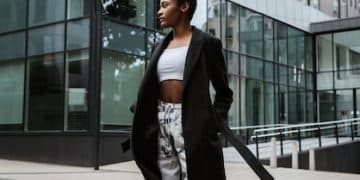Decoding Dress Codes: Your Guide to Every Occasion

Decoding Dress Codes: What to Wear to Every Occasion, From Business Casual to Black Tie, is a comprehensive guide that demystifies the world of dress codes, ensuring you’re perfectly dressed for any event, whether it’s a relaxed business meeting or a formal black-tie gala.
Navigating the world of dress codes can feel like deciphering a secret language. From the confusing realm of decoding dress codes: what to wear to every occasion, from business casual to black tie engagements, you’re never quite sure what’s appropriate. But fear not, this guide aims to simplify the fashion rules, revealing exactly what to wear and when, empowering you to step out with confidence, no matter the occasion.
Understanding the Basics of Dress Codes
Before diving into specific dress codes, it’s essential to grasp the fundamental principles that govern them. Dress codes are essentially guidelines that dictate the appropriate attire for a particular event or setting, reflecting respect for the occasion and its hosts. Knowing these underlying rules can make navigating the nuances of various dress codes much easier.
The Importance of Context
The context of an event plays a significant role in determining the appropriateness of your attire. Consider the venue, time of day, and the nature of the event itself. A daytime wedding in a garden will likely require a different outfit than an evening gala in a ballroom.
Decoding the Invitation
Often, the invitation itself provides clues about the expected level of formality. Pay close attention to any specific dress code mentioned, as well as the overall tone and design of the invitation. A formal invitation with elegant script suggests a more upscale event.
- Consider the Audience: Think about the people who will be attending the event. Are they generally fashion-forward or more traditional?
- When in Doubt, Ask: If you’re unsure about the dress code, don’t hesitate to reach out to the host or event organizer for clarification.
- It’s Better to Overdress Than Underdress: If you’re still uncertain, it’s generally better to err on the side of being slightly more dressed up than too casual.
By understanding the basics of dress codes, you can approach each event with confidence, knowing that you’re appropriately dressed and ready to make a great impression. Paying attention to context, invitation cues, and the audience can help you navigate the often-confusing world of fashion expectations.
Business Casual: Striking the Right Balance
Business casual is one of the most common, and often most confusing, dress codes. It aims to strike a balance between professional and comfortable, creating a relaxed yet polished look appropriate for many modern workplaces and business events. Understanding the nuances of business casual is essential for projecting a professional image while maintaining a sense of personal style.
Defining Business Casual
Generally, business casual means clothing that is less formal than traditional business attire but still conveys professionalism. Think of it as a step down from suits and ties, but a step up from weekend wear.
Key Pieces for Business Casual
Building a business casual wardrobe involves selecting versatile pieces that can be mixed and matched to create different looks. Key items include button-down shirts, blouses, chinos, dress pants, blazers, and sweaters.

- Tops: Opt for button-down shirts, blouses, or knit tops in solid colors or subtle patterns.
- Bottoms: Chinos, dress pants, or skirts (knee-length or longer) are good choices. Avoid jeans, leggings, or overly casual fabrics.
- Outerwear: Blazers, cardigans, or sweaters can add a layer of polish and warmth.
Mastering business casual is about understanding the balance between comfort and professionalism. By choosing versatile pieces and paying attention to fit and fabric, you can create a wardrobe that allows you to feel confident and put-together in any business setting.
Cocktail Attire: Elegant and Festive
Cocktail attire is a semi-formal dress code that strikes a balance between sophistication and celebratory flair. It’s commonly requested for parties, weddings, and other festive events, offering an opportunity to showcase your personal style while maintaining a polished appearance. Understanding the key elements of cocktail attire will help you navigate these events with confidence and grace.
The Essence of Cocktail Attire
Cocktail attire is generally more formal than business casual but less formal than black tie. It calls for dresses or dressy separates for women and suits or dress shirts with blazers for men, offering a range of stylish possibilities.
What to Wear: Women
For women, cocktail attire opens up a world of possibilities. Dresses are a popular choice, but elegant separates can also make a statement. The key is to choose pieces that are festive, stylish, and appropriate for the occasion.
- Dresses: Knee-length or midi dresses are classic choices. Opt for fabrics like silk, velvet, or lace, and consider jewel tones or bold colors.
- Shoes: Heels are a must for cocktail attire. Consider pumps, stilettos, or dressy sandals.
- Accessories: A clutch, statement jewelry, and elegant outerwear can complete your look.
Cocktail attire is an opportunity to showcase your personal style while adhering to a semi-formal dress code. By focusing on festive fabrics, elegant silhouettes, and carefully chosen accessories, you can create a memorable and sophisticated look for any cocktail event.
Black Tie: Mastering Formal Elegance
Black tie is one of the most formal dress codes, typically reserved for evening events such as galas, balls, and upscale weddings. It signifies a high level of elegance and sophistication, requiring specific attire to honor the tradition and formality of the occasion. Deciphering the nuances of black tie is crucial for making a lasting impression at these prestigious events.
The Definition of Black Tie
Black tie denotes a formal evening event where men are expected to wear tuxedos and women are expected to wear floor-length gowns. It is a dress code that prioritizes timeless elegance and adherence to traditional standards.
What to Wear: Men
For men, black tie is fairly straightforward, with specific guidelines for each element of the outfit. The key is to ensure a proper fit and attention to detail.
- Tuxedo: A black tuxedo with satin lapels is the standard. A midnight blue tuxedo is also acceptable.
- Shirt: A white dress shirt with pleats or a bib front is essential.
- Accessories: A black bow tie, black cummerbund or vest, and black dress shoes (patent leather or highly polished) complete the look.
Mastering black tie is about understanding and adhering to the established traditions of formal wear. By focusing on fit, fabric, and subtle details, you can ensure that you look polished, sophisticated, and appropriately dressed for any black-tie event.

Casual Wear: Relaxed and Comfortable
Casual wear is the most relaxed of all dress codes, emphasizing comfort and personal expression. It’s suitable for everyday activities and informal gatherings where the primary goal is to feel at ease. While casual wear allows for a wide range of choices, it’s still important to maintain a sense of style and appropriateness for the situation.
Defining Casual Wear
Casual wear generally includes comfortable clothing items like jeans, t-shirts, sneakers, and sandals. It’s a great option for everyday activities where comfort and ease of movement are prioritized.
Key Elements of Casual Outfits
Creating a stylish casual outfit involves selecting pieces that are comfortable yet put-together. Key elements include well-fitting jeans, comfortable tops, and versatile footwear.
Ultimately, casual wear is about expressing your personal style while remaining comfortable and appropriate for the situation. By choosing well-fitting pieces and paying attention to details, you can create casual outfits that are both stylish and effortless.
Themed Events: Adding a Touch of Fun
Themed events offer a unique opportunity to showcase your creativity and embrace a particular theme. These events can range from costume parties to decade-themed gatherings, requiring you to think outside the box and choose attire that aligns with the event’s specific theme. Approaching themed events with enthusiasm and a willingness to experiment can lead to memorable and enjoyable experiences.
Understanding the Theme
The first step in dressing for a themed event is to thoroughly understand the theme itself. Research the theme and gather inspiration to ensure your outfit is appropriate and well-executed.
Creative Outfit Planning
Once you understand the theme, begin planning your outfit. Consider renting or borrowing costumes, or creating your own unique look by combining different pieces and accessories.
- Costume Parties: Embrace the opportunity to dress up as your favorite character or iconic figure.
- Decade-Themed Events: Research the fashion trends of the specific decade and incorporate those styles into your outfit.
- Cultural Events: Dress respectfully and authentically, drawing inspiration from the cultural traditions associated with the event.
Dressing for themed events is about embracing creativity and having fun with fashion. By understanding the theme, planning your outfit carefully, and adding personal touches, you can create a memorable and impressive look that contributes to the overall atmosphere of the event.
| Key Point | Brief Description |
|---|---|
| 👔 Business Casual | Balances professionalism with comfort, ideal for modern workplaces. |
| 🍸 Cocktail Attire | Elegant and festive, suitable for parties and weddings. |
| 🤵 Black Tie | Most formal, reserved for galas and upscale events. |
| 🎉 Themed Events | Creative and fun, requires attire that aligns with a specific theme. |
Frequently Asked Questions
▼
Business casual is more polished, often including blazers and dress pants. Smart casual is slightly more relaxed, allowing for jeans and more casual tops, depending on the workplace.
▼
Generally, no. Cocktail attire calls for dresses or dressy separates. Jeans are too casual for this dress code.
▼
Men should wear black dress shoes, typically patent leather or highly polished. Women should wear elegant heels, such as pumps or stilettos.
▼
Focus on fit, choose high-quality fabrics, and add accessories like statement jewelry or a stylish scarf. Layering can also elevate a casual outfit.
▼
When in doubt, it’s best to err on the side of being slightly more dressed up. You can also reach out to the host or event organizer for clarification.
Conclusion
Understanding and adhering to dress codes is essential for making a positive impression and showing respect for the occasion. By mastering the nuances of each dress code, from business casual to black tie, you can confidently navigate any event and showcase your personal style with grace and sophistication.





